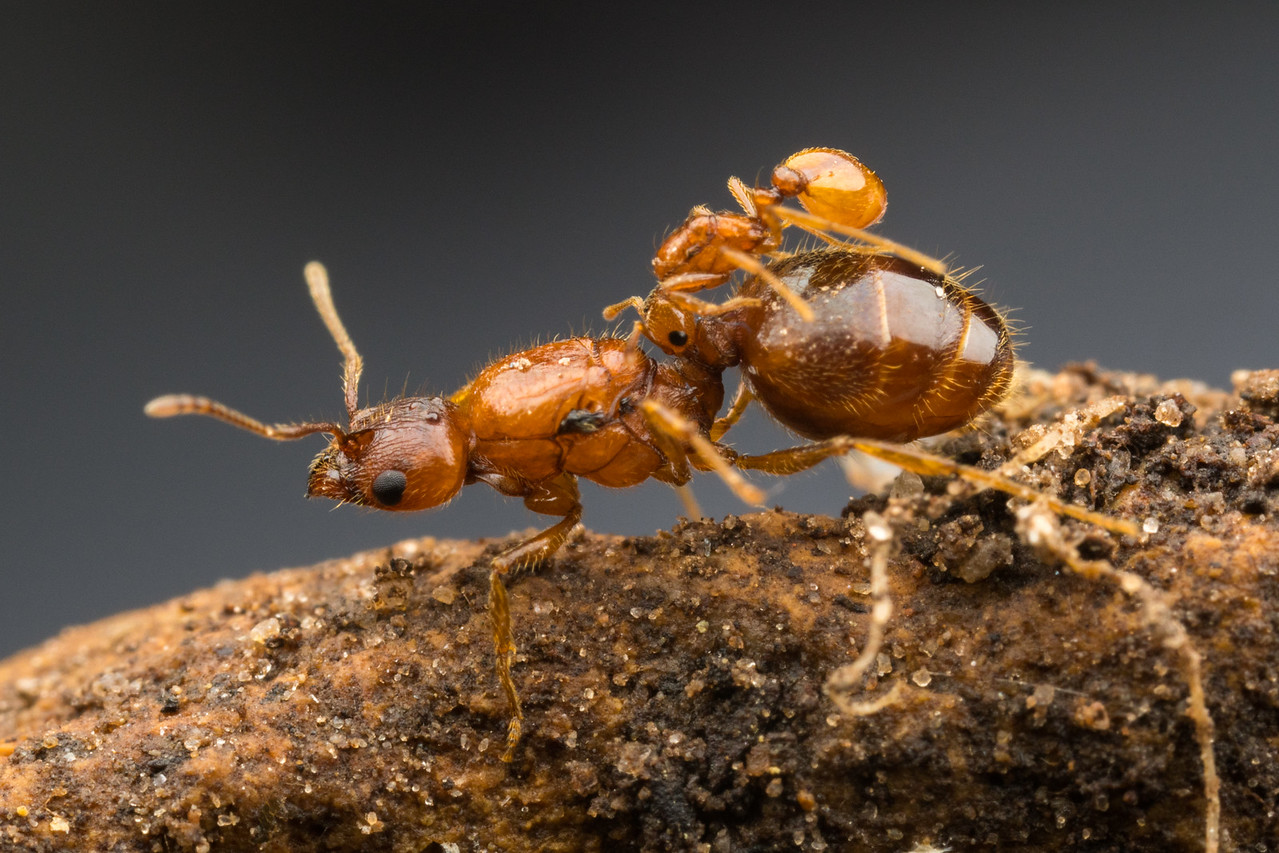In the entomology world, the discovery of a new species means scientists also have the opportunity to name that species. In one recent case, the naming was easy. University of Texas at Austin entomologists discovered two species and named them “rodeo ants” because they ride on the backs of ant queens in other colonies.
Alex Wild is curator of entomology and a lecturer in the Department of Integrative Biology at UT. He says rodeo ants are “social parasites.”
“There are a number of ant species that have figured of how to get other ant colonies to do all the work for them,” he says. “[They] forgo making their own workers; [they] sneak into other ant nests and just sort of drop their own eggs into the brood pile.”
Wild says the ants likely ride on the backs of queens as a way to camouflage. It’s probably the safest place for them to try to drop their eggs into another’s nest.
Wild says he stumbled upon these ants when he was on a walk. Some were hairy and others were smooth.
“It looks like these rodeo ants are also mimicking some of the structures and textures of their hosts,” Wild says.
After his discovery, he tasked his students to try and find others. He says that might be difficult, though, because there are an estimated 30,000 ant species total, worldwide.
Written by Caroline Covington.















